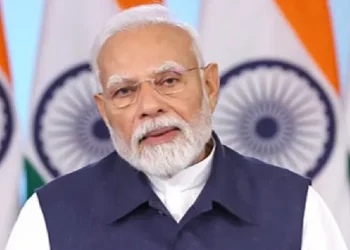Rajasthan, geographically the largest State, spread across 3.4 lakh square kilometers, shares an age-old relationship with nature, with the Aravalli Mountain range, Keoladeo National Park of Bharatpur, the Ranthambore National Park, and the Mukundra Hills Tiger Reserve among many others comprising key features of its urban landscape. With 25% of its population (as per Census 2011) residing in urban areas, the State has constructed over 3.5 lakh Individual Household Latrines (IHHL) and over 31,000 Community and Public toilets, along with various solid waste management initiatives for its urban residents under the Swachh Bharat Mission Urban (SBM-U), since 2014.
Across the State, over 4,800 metric tonnes (MT) of municipal solid waste is generated per day by the 198 Urban Local Bodies. While 99% of its wards are covered by door-to-door collection of waste, only 28% of this waste is scientifically processed while the majority of the unprocessed waste ends up in nearby dumpsites. Despite exemplary work done by cities such as Dungarpur (‘Cleanest City’ in 25K-50K population category in Swachh Survekshan 2021), Rajasthan ranked 11th out of 14 States in the ‘more than 100 ULBs’ category in Swachh Survekshan 2021. It would therefore be critical for the State to urgently take steps in the days to come to segregate waste at source, improve waste processing capacities, and also begin the remediation of its legacy dumpsites.
Swachh Bharat Mission-Urban 2.0 was launched along with Atal Mission for Rejuvenation and Urban Transformation (AMRUT) 2.0 on 1st October 2021 by Hon’ble Prime Minister Shri Narendra Modi. The vision for SBM-U 2.0 is to achieve sustainable sanitation and scientific waste processing for ‘Garbage Free Cities’. The national focus is on phasing out single use plastics, ensuring of the scientific processing of construction & demolition waste, and establishing Waste to Compost, Waste to Energy, as well as Material Recovery Facilities. The budgetary allotment for SBM-U 2.0 for the State is ₹1,765.80 crore, which is 2.5 times more than the allocation of Rs. ₹705.46 crore in SBM-U from 2014-19 of which Rajasthan has been able to claim 87% of the available funds.
Under SBM-U 2.0, the Ministry of Housing and Urban Affairs (MoHUA) has been constantly engaging with Rajasthan’s Local Self Government Department (LSGD) through Capacity Building Workshops, and handholding sessions on Action Plan preparation for Solid Waste Management for every Urban Local Body in order to build the State’s capacity in this regard. Recently, a boost has been provided to the State by MoHUA through the approval of proposals worth ₹250.15 crores submitted by the State for remediation of more than 45.5 lakh MT of legacy waste present across 24 cities.
The pink city of Jaipur, which is the capital city of Rajasthan and holds the maximum amount of legacy waste in the State, is also preparing itself to remediate 11.9 lakh MT of legacy waste to transform their urban landscape, improve the quality of life for its residents, and reclaim approx. 147 acres of viable city land. Bikaner Municipal Corporation is set to remediate approx. 6.65 lakh MT of waste lying in the city’s dumpsite while the heritage city of Jodhpur plans to remediate approx. 4MT of legacy waste and reclaim 17 acres of prime land. It is expected that this effort to remediate will facilitate the recovery of over 473 acres (approx.) of valuable land across the State that is currently buried under decades-old waste.
The remediation of legacy waste will take the State closer to its envisioned dream of becoming Garbage Free and will also facilitate the State to achieve ‘Lakshya Zero Dumpsite’ within the Mission period. (PIB)












